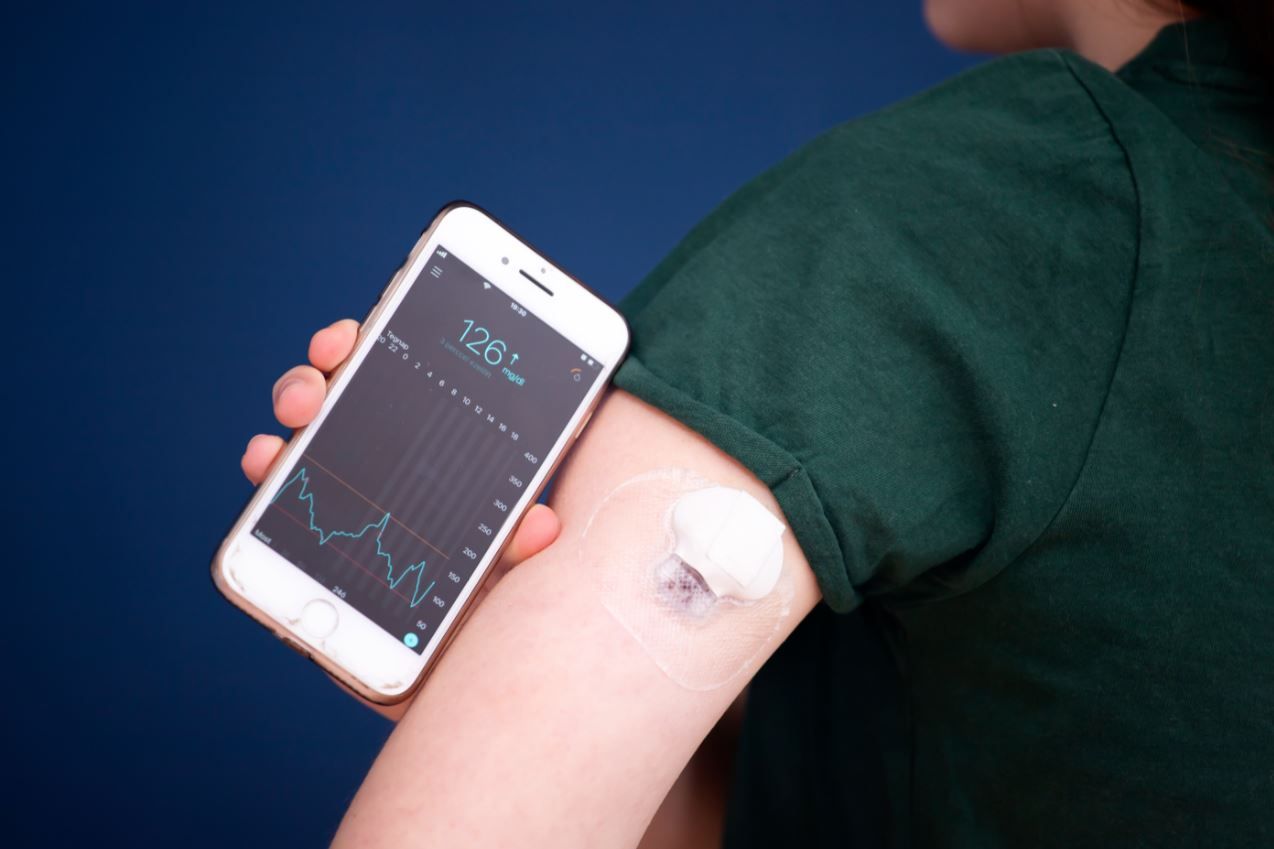- Clinical Technology
- Adult Immunization
- Hepatology
- Pediatric Immunization
- Screening
- Psychiatry
- Allergy
- Women's Health
- Cardiology
- Pediatrics
- Dermatology
- Endocrinology
- Pain Management
- Gastroenterology
- Infectious Disease
- Obesity Medicine
- Rheumatology
- Nephrology
- Neurology
- Pulmonology
CGM Improves Glycemic Control in Patients with T2D on Basal Insulin Alone
MOBILE study group: in patients with type 2 diabetes on a less intensive insulin regimen, CGM use lowered A1c and increased time in target glucose range vs traditional blood glucose monitoring.
©erika8213/stock.adobe.com

Use of continuous glucose monitoring (CGM) by patients with type 2 diabetes (T2D) treated in primary care settings improved glycemic control and improved time in target glucose range compared to standard blood glucose monitoring (BGM), according to new results from the MOBILE study group published online June 2, 2021 in the Journal of the American Medical Association.
Research has shown that CGM improved glycemic control in individuals with type 1 diabetes and in those with T2D using both basal and prandial insulin. Less well understood is the role of CGM in T2D patients using less-intensive insulin regimens, which this study is the first to do. Also of interest to the investigators was the use of CGM in primary care practice where the majority of T2D patients receive their diabetes care.
The study was led by Thomas Martens, MD, from the International Diabetes Center, Park Nicollet Internal Medicine, Minneapolis, Minnesota with other members of the MOBILE study group and conducted in conjunction with the Jaeb Center for Health Research in Tampa, FL.
The multicenter randomized open-label clinical trial was conducted at 15 US centers and enrolled participants between July 30, 2018, and October 30, 2019. Participants were receiving care for T2D from a primary care clinician, not from a specialist.
Eligibility criteria included age ≥30 years with a diagnosis of T2D being treated with 1 or 2 daily injections of long- or intermediate-acting basal insulin for at least 6 months, locally measured A1c of 7.8% to 11.5, self-reported BGM testing ≥3 times per week, and availability of a smart phone compatible with the CGM device. Participants could be taking additional antihyperglycemic medications, other than prandial insulin, with demonstration that the regimen had been stable for 3 months.
Before randomization, all participants recorded glucose concentrations for up to 10 days using a blinded CGM. Study inclusion required a minimum of 168 hours of glucose values available.
Of the final 175 participants, 116 were randomized to CGM and 59 to traditional BGM. Mean age of the cohort was 57 years (range 33-79) and mean baseline A1c was 9.1% (7.1%-11.6%); 50% of participants were women and 53% were of minority race or ethnicity. Nearly half (48%) were taking 2 additional medications. Ninety-four percent of those enrolled completed the trial.
The primary outcome of interest was A1c level at 8 months; key secondary outcomes were CGM-measured time in target glucose range of 70 to 180 mg/dL, time with glucose level at >250 mg/dL, and mean glucose level at 8 months.
At 8 months, mean A1c level in the CGM group had decreased from 9.1% at baseline to 8.0% and in the BGM group from 9.0% at baseline to 8.4% (adjusted difference, −0.4% [95% CI, −0.8% to −0.1%]; P = .02).
For secondary outcomes, when the CGM and BGM groups were compared, the CGM group had:
- Greater mean percentage of CGM-measured time in target glucose range of 70-180 mg/dL: 59% vs 43% (adjusted difference, 15% [95% CI, 8% to 23%]; P<.001)
- Lower mean percentage of time at >250 mg/dL: 11% vs 27% (adjusted difference, −16% [95% CI, −21% to −11%]; P<.001)
- Lower means of mean glucose values: 179 mg/dL vs 206 mg/dL (adjusted difference, −26 mg/dL [95% CI, −41 to −12]; P<.001)
Adverse events were minimal with 1 severe hypoglycemic event in 1 participant each in the CGM and BGM groups.
The observed improvement in glycemic control in T2D patients taking only basal insulin could further support integration of CGM into routine care for these patients.
The authors note a significant strength of the study was the racially and socioeconomically diverse population—most were non-white, had less than a college degree, and did not have private insurance.
They also point out in their discussion that the design of the study to recruit patients from primary care is based on the fact that “…type 2 diabetes is primarily managed in the primary care setting and not by endocrinologists.” However, the use of diabetes specialists as advisors to primary care clinicians during the study, they said, does not reflect standard practice in most clinical settings and so may limit the generalizability of the findings.
That said, in an accompanying editorial, the University of Chicago’s Monica Peek, MD, MPH, and Celeste Thomas, MD, MS, wrote:
“The clinical trial by Martens et al demonstrated the promise of using CGM in primary care settings, where most patients with type 2 diabetes receive their care. This trial, in which study clinicians met with trial participants during in-person clinic visits followed by virtual visits, provides a model that could be replicated or modified in many primary care practices throughout the US.”
